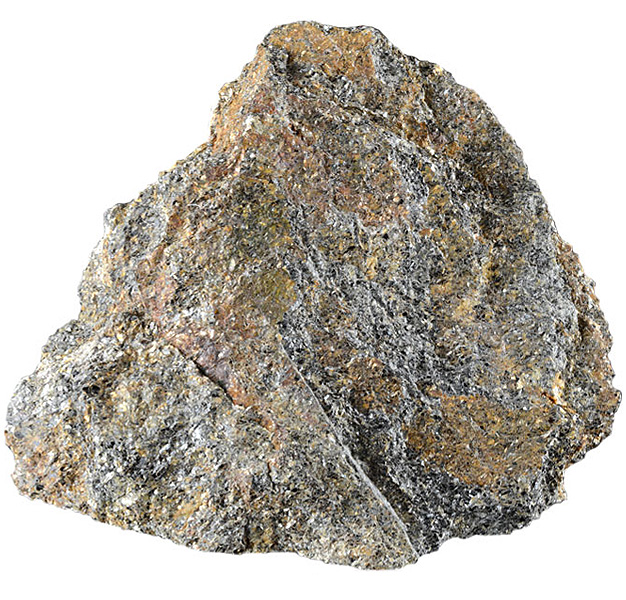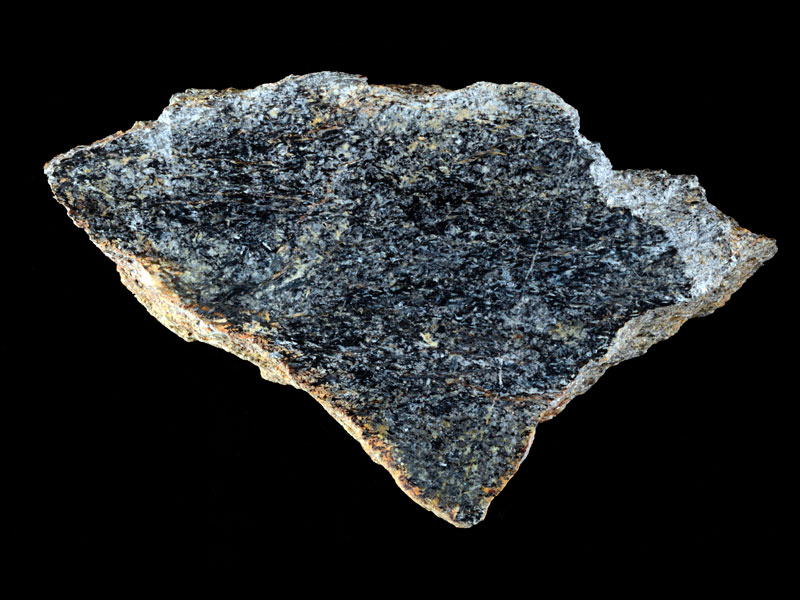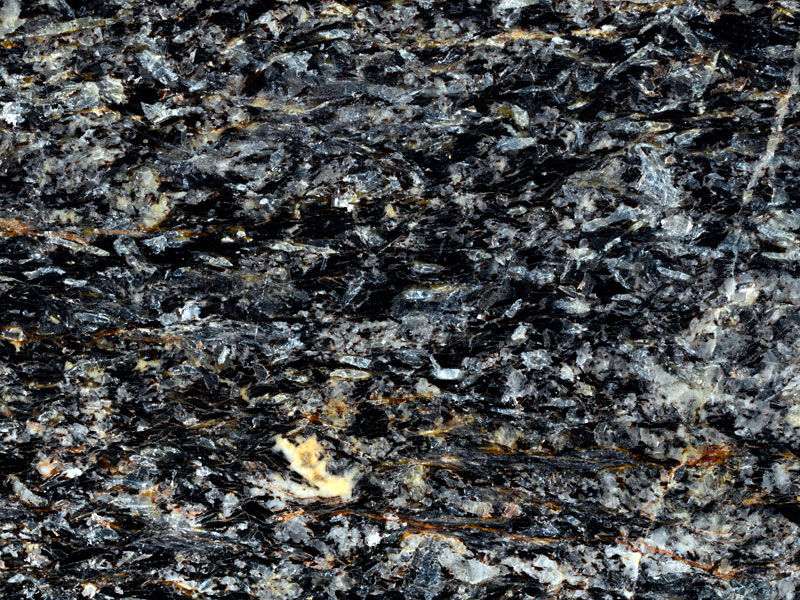
Fact sheet
This rock was deposited as a siltstone or banded silt and mudstone in the late Proterozoic period, before being subject to regional metamorphism in the Grampian orogeny. It now forms part of the Dalradian succession in Scotland within the 'sillimanite' Barrovian metamorphic zone (Barrow zones include chlorite-biotite-garnet-staurolite-kyanite-sillimanite). The rock was collected in Glen Doll, Angus, Tayside, Scotland.
In thin section the rock fabric is dominated by muscovite and biotite micas, intergrown with quartz and feldspars. The thin section also contains abundant kyanite, distinguished by its high relief and dominant length parallel cleavage, and sillimanite characterised by slightly lower relief and rarer basal cleavage. In addition, this thin section contains fibrolite, a fine-grained, needle-like form of sillimanite that overgrows other minerals and clearly grew late in the metamorphic sequence. Garnet is abundant in the lower right-hand side of the thin section.
The United Kingdom Virtual Microscope (UKVM) collection consists of igneous, sedimentary and metamorphic rocks from around the UK.
It is intended as a teaching resource, helping to tell the story of the common rock types and how they form, and reflecting the history of the UK at the margins of the continent of Europe. The collection is a series of teaching sets, for example igneous rocks from the North Atlantic Igneous Province and SW England; high-temperature metamorphic rocks from Scotland and low-temperature metamorphic rocks from Wales; and sedimentary rocks, including English limestones and sandstones.







